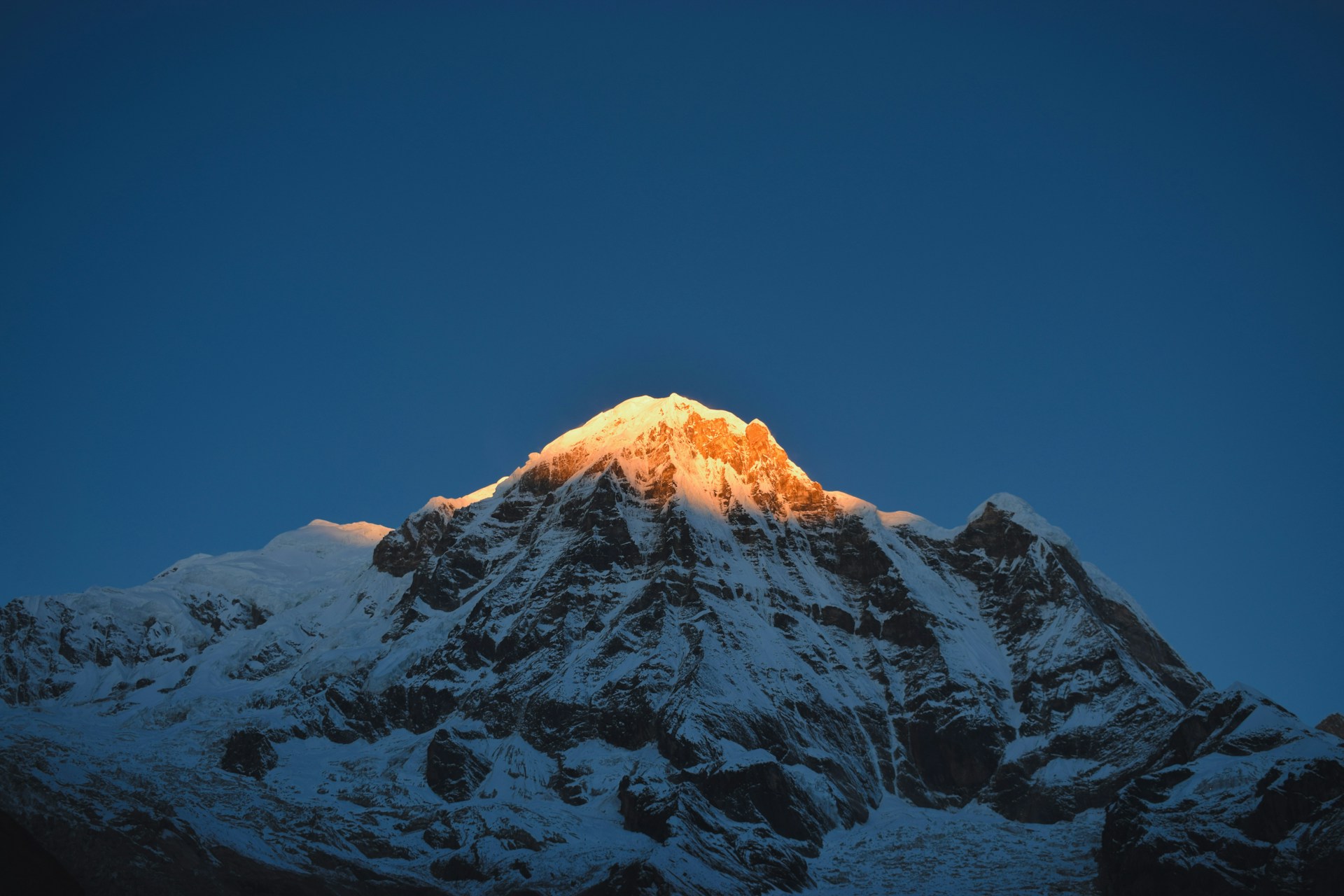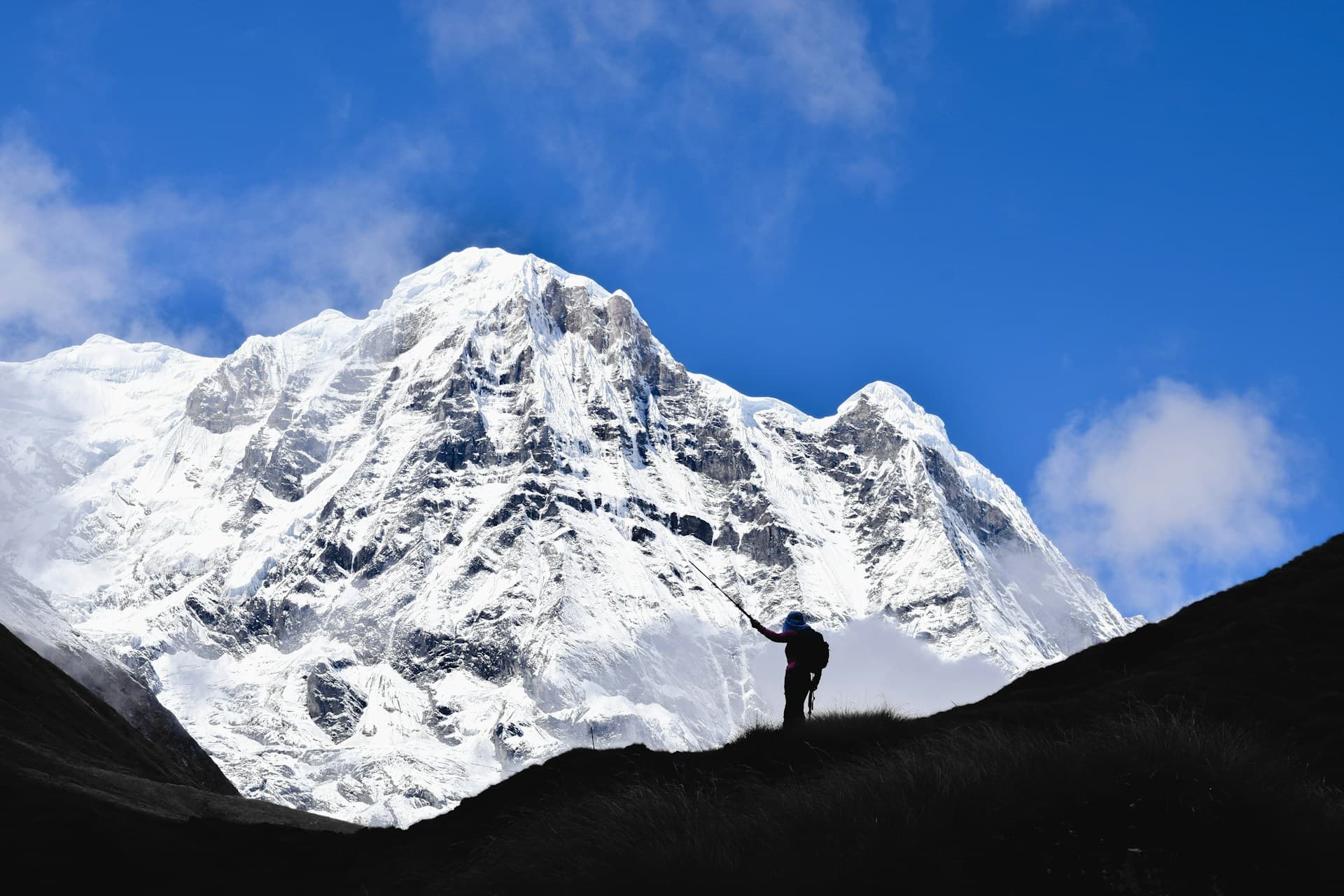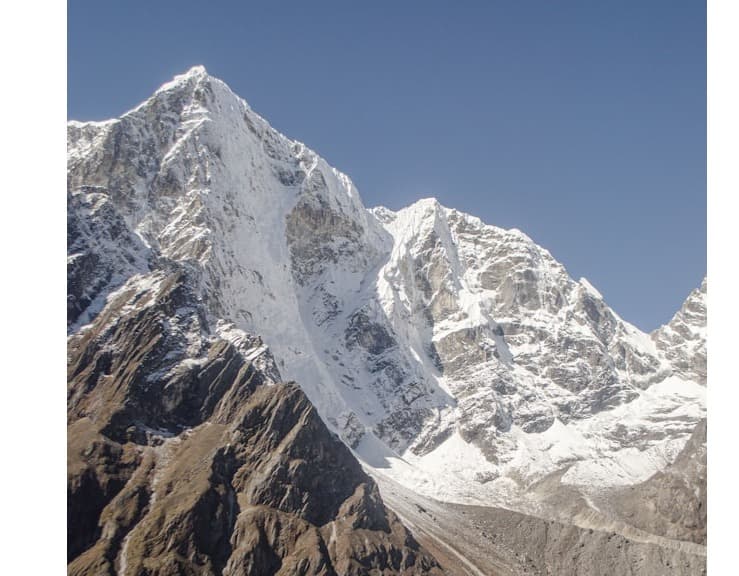Embark on an unforgettable journey through the breathtaking Annapurna Base Camp trek, an adventure that takes you into the heart of Nepal's majestic Himalayas. This trek offers an unparalleled blend of stunning natural beauty, rich cultural encounters, and the thrill of high-altitude exploration. Experience the vibrant rhododendron forests, serene alpine meadows, and awe-inspiring mountain vistas, including the formidable Annapurna South, Annapurna I, and Machhapuchhre. The trek is not just a physical challenge but a spiritual journey, as you traverse traditional Gurung and Thakali villages, immerse yourself in local customs, and enjoy the warm hospitality of the Nepalese people. With each step, uncover the diverse ecosystems, from subtropical jungles to arid high-altitude landscapes, making the Annapurna Base Camp trek a quintessential Himalayan adventure.

Trekking to Annapurna Base Camp (ABC) is an epic journey that combines breathtaking natural beauty with a deep cultural immersion, making it one of the most popular treks in Nepal's Himalayan region. Here's a detailed guide and some stories from the trek:
Preparation and Best Time to Go:
The best times to trek the Annapurna Base Camp are during the spring (March to May) and autumn (September to November) seasons. During these periods, the weather is clear, and the views are spectacular. Preparation involves physical training, securing necessary permits (Annapurna Conservation Area Permit and TIMS card), and packing essential gear such as hiking boots, warm layers, a sleeping bag, and a first aid kit.
Route and Duration:
The classic ABC trek typically takes about 7 to 12 days, depending on your pace and itinerary. The trek starts in Pokhara, a beautiful lakeside city. From there, you'll head to Nayapul, the starting point, and pass through picturesque villages like Tikhedhunga, Ghorepani, and Tadapani. A highlight is the ascent to Poon Hill for a stunning sunrise view over the Himalayas. The trail then leads through Chhomrong, Dobhan, and finally to the Annapurna Base Camp at 4,130 meters.
Experiences and Challenges:
Trekkers experience a variety of landscapes - from lush rhododendron forests and terraced rice fields to alpine zones and glacial moraines. The diversity of flora and fauna is remarkable, with chances to spot wildlife like langur monkeys and colorful pheasants. One challenge is the altitude; acclimatization days are essential to avoid altitude sickness. The trek involves crossing suspension bridges, climbing steep staircases, and navigating rocky paths.
Cultural Insights:
One of the most enriching aspects of the ABC trek is the opportunity to interact with the local Gurung and Magar communities. Trekkers can learn about traditional lifestyles, taste local cuisines like dal bhat, and participate in cultural activities. Tea houses along the way provide warm hospitality and a chance to engage with other trekkers from around the world.
Personal Stories:
Many trekkers talk about the camaraderie formed on the trail and the personal growth from pushing their limits. The sight of the Annapurna Massif, especially Annapurna I and the iconic Machhapuchhre (Fish Tail), is often described as transformative. The journey to ABC is not just about reaching the base camp but also about the introspective moments and connections made along the way.
Post-Trek Reflections:
Completing the trek leaves many with a sense of accomplishment and a deeper appreciation for nature's grandeur and cultural richness. It's common for trekkers to return with stories of spectacular sunsets, heartfelt interactions with locals, and moments of solitude amidst the mountains that have a lasting impact on their lives.
History of Annapurna Base Camp Treks

The Annapurna Base Camp (ABC) trek has a rich and fascinating history that intertwines the allure of the Himalayas with the cultural heritage of Nepal's diverse ethnic communities. This trek is part of the larger Annapurna region, which was first brought into the global spotlight by early explorations and mountaineering expeditions.
Early Explorations and Mountaineering:
-
The Annapurna region's prominence in the mountaineering world began with the successful ascent of Annapurna I by a French expedition led by Maurice Herzog in 1950. This was the first successful ascent of an 8,000-meter peak and marked a significant milestone in Himalayan exploration. Herzog's book "Annapurna," which recounts this expedition, helped to ignite interest in the region among adventurers worldwide.
-
Before these high-profile ascents, the area was relatively unknown to outsiders. The local Gurung and Magar communities lived in harmony with the rugged terrain, practicing subsistence agriculture and pastoralism. The region's challenging topography and the sacred significance of the mountains meant that few ventured into the high Himalayas.
Development of Trekking Routes:
-
The trekking boom in Nepal began in the 1970s after the country opened up to tourism. The Annapurna Circuit, encompassing a larger area than the ABC trek, became one of the most popular treks globally. This attention eventually led to the development of the shorter Annapurna Base Camp trek as an alternative for those with less time or seeking a more direct experience of the high mountains.
-
The establishment of the Annapurna Conservation Area Project (ACAP) in 1986 was a pivotal moment for the region. It aimed to balance environmental conservation with sustainable tourism and community development. This initiative helped improve the trekking infrastructure, with better trails, signage, and the establishment of lodges and tea houses.
Growth in Popularity and Impact:
-
As the trek's popularity grew, so did the infrastructure, with the establishment of tea houses and lodges along the route offering accommodation and meals to trekkers. This development has provided significant economic benefits to the local communities but also presented challenges such as environmental degradation and the need for sustainable practices.
-
The trek's allure is not only due to the stunning landscapes and peaks like Annapurna South, Machhapuchhre, and Annapurna I but also because of the rich cultural experiences. Trekkers can visit traditional Gurung villages like Ghandruk and Chhomrong, experiencing the local lifestyle and hospitality.
Recent Developments and the Future:
-
In recent years, the Annapurna Base Camp trek has continued to evolve, with efforts to improve sustainable tourism practices and enhance the safety and experience of trekkers. This includes managing waste, maintaining trails, and providing training and resources for local guides and porters.
-
The route has also seen innovations like the introduction of luxury lodges and eco-friendly practices to ensure that trekking remains a viable option for future generations while preserving the unique cultural and natural heritage of the Annapurna region.
The history of the Annapurna Base Camp trek is a testament to the enduring appeal of Nepal's Himalayas and the resilience and hospitality of its people. It remains a symbol of adventure, exploration, and the harmonious blend of nature and culture.
Beautiful scenery of Annapurna Base Camp Treks
.jpg)
Trekking to Annapurna Base Camp offers a kaleidoscope of stunning scenery, each more breathtaking than the last. Here are the top 10 beautiful sceneries you'll encounter, enriched with key descriptors to capture their essence:
Machhapuchhre (Fishtail Mountain) Viewpoint:
The majestic Machhapuchhre, with its unique fishtail shape, dominates the skyline throughout much of the trek. The best views are from Poon Hill and various points along the trail, where the mountain's snow-capped peak glimmers at sunrise and sunset, providing a photogenic backdrop that's a favorite among trekkers.
Poon Hill Panorama:
Ascending Poon Hill before dawn rewards trekkers with a 360-degree panorama of the Himalayas, including Annapurna South, Dhaulagiri, and Machhapuchhre. The golden hues of sunrise illuminate the peaks, creating a mesmerizing spectacle and one of the most iconic photographic opportunities in the region.
Annapurna South Face:
The sheer scale of Annapurna South's face is awe-inspiring as you approach the base camp. This colossal peak stands tall, its rugged contours and towering glaciers showcasing the raw power of nature. The contrast of deep snow against blue skies creates a visually striking effect.
Bamboo and Rhododendron Forests:
The lower sections of the trek meander through dense bamboo and rhododendron forests. In spring, these woods are alive with blooming rhododendrons of various colors—reds, whites, and pinks—adding a vibrant touch to the greenery and enhancing the trek's fairy-tale feel.
Ghandruk Village:
Ghandruk is a traditional Gurung village offering picturesque views of the Annapurna range. The stone houses, terraced fields, and friendly locals provide a glimpse into the rural Nepalese lifestyle, set against a backdrop of towering peaks.
Chhomrong Village:
Situated on a hilltop, Chhomrong is the last major settlement before ABC and provides dramatic views of Annapurna South and Machhapuchhre. The mix of traditional culture and stunning vistas makes this village a memorable stop.
Hot Springs at Jhinu Danda:
After days of trekking, the natural hot springs near Jhinu Danda offer a therapeutic and relaxing experience. The warm waters are surrounded by the lush landscape, providing a unique way to unwind with views of the river and hills.
Deurali's Alpine Terrain:
As you ascend higher, the scenery shifts to the stark, rugged beauty of Deurali. Here, the landscape is more alpine, with fewer trees and more rocky terrain, offering expansive views of the valley below and the mountains above.
Annapurna Base Camp and the Annapurna Glacier:
Reaching ABC itself is the climax, with 360-degree views of the Annapurna massif encircling you. The nearby Annapurna Glacier adds to the surreal landscape, with its crevasses and icefalls creating a dramatic and ever-changing natural sculpture.
Modi Khola River Valley:
Following the Modi Khola river, the trail winds through lush valleys that offer a soothing contrast to the high-altitude starkness. The river's gurgling waters, combined with the surrounding greenery and distant peaks, make for a tranquil trekking experience.



